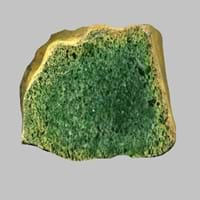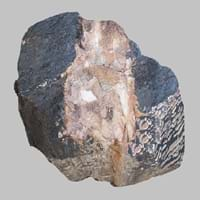Definition
Jadeitite is a metamorphic rock usually found in blueschist grade metamorphic terrains
Claystone is a fine-grained, dark gray to pink sedimentary rock which mainly consists of compacted and hardened clay
Discoverer
Unknown
Unknown
Etymology
From pyroxene mineral jadeite
From English clay and stone as the rock contains more amount of clay
Class
Metamorphic Rocks
Sedimentary Rocks
Sub-Class
Durable Rock, Medium Hardness Rock
Durable Rock, Medium Hardness Rock
Group
Not Applicable
Not Applicable
Other Categories
Fine Grained Rock, Opaque Rock
Fine Grained Rock, Opaque Rock
Color
Black, Brown, Colourless, Green, Grey, White
Black, Blue, Brown, Green, Grey, Orange, Red, White, Yellow
Durability
Durable
Durable
Appearance
Rough and Dull
Rough and Dull
Interior Uses
Decorative Aggregates, Homes, Interior Decoration
Decorative Aggregates, Entryways, Floor Tiles, Homes, Interior Decoration
Exterior Uses
Garden Decoration, Office Buildings, Paving Stone
As Facing Stone, Roof Tiles
Other Architectural Uses
Curbing
Curbing
Construction Industry
As Dimension Stone, Cutting Tool, Knives
As a Sintering Agent in Steel Industry to process Iron Ore, Cement Manufacture, Construction Aggregate, for Road Aggregate, Making natural cement, Raw material for the manufacture of mortar
Medical Industry
Not Yet Used
Not Yet Used
Antiquity Uses
Artifacts, Jewellery, Monuments, Sculpture
Artifacts, Sculpture, Small Figurines
Commercial Uses
Commemorative Tablets, Creating Artwork, Jewelry
Pottery
Types
Not Available
Not Available
Features
Host Rock for Lead
Available in Lots of Colors and Patterns, Smooth to touch, Very fine grained rock
Archaeological Significance
Monuments
Used
Not Yet Used
Famous Monuments
Data Not Available
Not Applicable
Famous Sculptures
Data Not Available
Data Not Available
Formation
Due to change in environmental conditions, rocks are heated and pressurized deep inside the Earth's surface. Jadeitite is formed from the extreme heat caused by magma or by the intense collisions and friction of tectonic plates.
Claystone is generally quite soft, but can be hard and brittle. It forms due to weathering of mudstone.
Mineral Content
Carbonate, Magnetite, Pyrrhotite, Serpentine, Sulfides
Biotite, Chlorite, Feldspar, Micas, Muscovite or Illite, Plagioclase, Pyrite, Quartz
Compound Content
Ca, CaO, Carbon Dioxide, KCl, MgO, Sulfur Dioxide, Sulphur
Aluminium Oxide, Ca, NaCl, CaO, Iron(III) Oxide, MgO, Silicon Dioxide
Types of Metamorphism
Cataclastic Metamorphism, Contact Metamorphism, Regional Metamorphism
Not Applicable
Types of Weathering
Not Applicable
Biological Weathering, Chemical Weathering, Mechanical Weathering
Types of Erosion
Coastal Erosion, Water Erosion, Wind Erosion
Coastal Erosion, Water Erosion
Grain Size
Very fine-grained
Fine Grained
Fracture
Uneven
Not Available
Streak
White, Greenish White or Grey
White
Porosity
Less Porous
Very Less Porous
Luster
Waxy and Dull
Dull
Compressive Strength
Not Available
Cleavage
Irregular
Perfect
Specific Gravity
2.79-3
0
Transparency
Opaque
Opaque
Density
2.5-3 g/cm3
2-2.9 g/cm3
Resistance
Heat Resistant, Water Resistant
Heat Resistant, Impact Resistant
Deposits in Eastern Continents
Asia
India, Saudi Arabia, Singapore, South Korea
Bangladesh, China, India, Russia
Africa
Ethiopia, Western Africa
Ethiopia, Kenya, Morocco, South Africa, Tanzania
Europe
England, Georgia, Switzerland, United Kingdom
Austria, France, Germany, Greece, Italy, Romania, Scotland, Spain, Switzerland
Others
Not Yet Found
Not Yet Found
Deposits in Western Continents
North America
Canada
Canada, Panama, USA
South America
Colombia
Bolivia, Chile, Colombia, Ecuador, Peru, Venezuela
Deposits in Oceania Continent
Australia
Central Australia, New South Wales, New Zealand, Western Australia
New South Wales, New Zealand, Queensland, Victoria, Western Australia
Jadeitite vs Claystone Characteristics
Though some rocks look identical, they have certain characteristics which distinguish them from others. Characteristics of rocks include texture, appearance, color, fracture, streak, hardness etc. Jadeitite vs Claystone characteristics assist us to distinguish and recognize rocks. Also you can check about Properties of Jadeitite and Properties of Claystone. Learn more about Jadeitite vs Claystone in the next section. The interior uses of Jadeitite include Decorative aggregates, Homes and Interior decoration whereas the interior uses of Claystone include Decorative aggregates, Entryways, Floor tiles, Homes and Interior decoration. Due to some exceptional properties of Jadeitite and Claystone, they have various applications in construction industry. The uses of Jadeitite in construction industry include As dimension stone, Cutting tool, Knives and that of Claystone include As a sintering agent in steel industry to process iron ore, Cement manufacture, Construction aggregate, For road aggregate, Making natural cement, Raw material for the manufacture of mortar.
More about Jadeitite and Claystone
Here you can know more about Jadeitite and Claystone. The life cycle of a rock consists of formation of rock, composition of rock and transformation of rock. The composition of Jadeitite and Claystone consists of mineral content and compound content. The mineral content of Jadeitite includes Carbonate, Magnetite, Pyrrhotite, Serpentine, Sulfides and mineral content of Claystone includes Biotite, Chlorite, Feldspar, Micas, Muscovite or Illite, Plagioclase, Pyrite, Quartz. You can also check out the list of all Metamorphic Rocks. When we have to compare Jadeitite vs Claystone, the texture, color and appearance plays an important role in determining the type of rock. Jadeitite is available in black, brown, colourless, green, grey, white colors whereas, Claystone is available in black, blue, brown, green, grey, orange, red, white, yellow colors. Appearance of Jadeitite is Rough and Dull and that of Claystone is Rough and Dull. Properties of rock is another aspect for Jadeitite vs Claystone. The hardness of Jadeitite is 3-5 and that of Claystone is 3.5-4. The types of Jadeitite are Not Available whereas types of Claystone are Not Available. Streak of rock is the color of powder produced when it is dragged across an unweathered surface. The streak of Jadeitite and Claystone is white, greenish white or grey. The specific heat capacity of Jadeitite is 0.95 kJ/Kg K and that of Claystone is 0.92 kJ/Kg K. Depending on the properties like hardness, toughness, specific heat capacity, porosity etc., rocks are resistant to heat, wear, impact, etc.Jadeitite is heat resistant, water resistant whereas Claystone is heat resistant, impact resistant.





